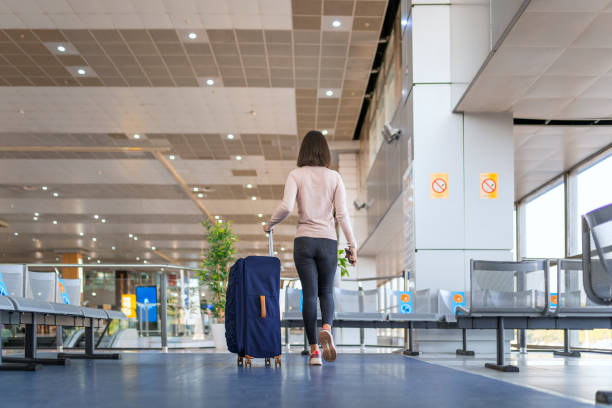How to Travel Without a Plan: The Joy of Spontaneous Adventures
In a world where almost everything is meticulously planned—flights booked months in advance, accommodation confirmations double-checked, and itineraries filled to the brim—it’s easy to forget one of the most liberating ways to travel: without a plan. While some may find comfort in having every detail mapped out, there’s a whole world of joy, excitement, and freedom waiting for those who choose to embrace the spontaneity of travel.
Imagine arriving at a destination with nothing but an open mind and a suitcase, ready to see where the journey takes you. Whether it’s taking advantage of last-minute deals, exploring a city on a whim, or letting your curiosity guide you to unexpected places, traveling without a plan offers a unique kind of freedom that structured trips can’t quite match.
In this guide, we’ll share why you should consider a spontaneous adventure, how to embrace the freedom of unstructured travel, and provide tips on how to make the most of a trip without any strict itinerary. Get ready to discover the joy of wandering!
Why Travel Without a Plan?
1. Freedom to Explore
When you don’t have a set itinerary, you’re free to follow your instincts. Want to spend an extra day in a small town because you love it? Go for it. Want to take a detour to explore a hidden beach or check out a quirky café you stumbled upon? You can.
Spontaneous travel allows you to slow down and live in the moment—whether that’s exploring a street you’ve never seen before, striking up a conversation with a local, or just sitting in a park and soaking in the surroundings.
2. Surprise and Delight
The beauty of traveling without a plan is that unexpected experiences can become some of your most treasured memories. Maybe you find a last-minute local festival or stumble upon a stunning view while walking aimlessly through a neighborhood. These surprises wouldn’t have been possible if you were following a pre-arranged schedule.
The joy of spontaneity lies in embracing the unknown and letting serendipity guide you to new adventures.
3. Stress-Free Travel
While planning can sometimes add to the excitement of a trip, it can also create stress and pressure. When you travel without a rigid plan, there’s no need to worry about making it to your next stop by a certain time or getting to the next attraction before closing hours. You don’t have to adhere to a timeline or rush through experiences. You’re free to take things at your own pace.
4. Flexibility Equals Better Deals
Without a pre-determined itinerary, you can take advantage of last-minute deals, flexible transport options, and unforeseen opportunities that might not be available to those who have everything set in stone. Often, accommodation prices drop closer to the date or last-minute flights are sold at a discount, allowing you to explore destinations that would have otherwise been out of your budget.
How to Travel Without a Plan: Practical Tips
1. Be Open to Last-Minute Deals
Spontaneous travel thrives on the ability to grab last-minute deals and take advantage of unexpected opportunities. Here’s how you can find great last-minute offers:
- Flight Deal Apps and Websites: Platforms like Skyscanner, Google Flights, and Hopper allow you to find last-minute flight deals. Set up alerts and you could be notified about a great deal to a city you’ve always wanted to visit.
- Accommodation Discounts: Apps like Hotel Tonight, Airbnb, or Booking.com often have last-minute deals or price drops that you can take advantage of. You might even stumble upon discounted stays while you’re already at your destination!
- Flexible Travel Options: Consider using flexible travel passes (like Eurail for Europe or buses in Asia), which give you the option to hop between cities without having to commit to a set schedule.
2. Choose Destinations That Are Easy to Explore Without a Plan
Some cities or regions are easier to explore spontaneously than others. Urban destinations with lots of public transport options or small towns with a relaxed vibe are ideal for unstructured travel. Here are a few examples:
- European Cities: Cities like Berlin, Barcelona, or Lisbon are ideal for spontaneous adventures. With lots to do and see, plus affordable public transport, it’s easy to simply wander around and discover new neighborhoods, cafes, or hidden gems without worrying about missing out.
- Southeast Asia: Southeast Asia offers plenty of opportunities for flexible travel, especially if you’re backpacking through countries like Thailand, Vietnam, or Cambodia. These regions often have well-established tourist infrastructure, and you’ll find plenty of last-minute accommodations and transportation options.
- Remote Getaways: If you prefer a more laid-back pace, consider smaller towns or nature destinations where there’s little to no need for an itinerary. Islands in Greece, the Caribbean, or even New Zealand’s South Island are perfect for embracing spontaneity in a peaceful environment.
3. Allow Time for the Unexpected
Part of the beauty of traveling without a plan is that you can allow yourself to go off the beaten path and try things you never expected. Here’s how to make the most of it:
- Walk aimlessly: One of the best ways to explore a new place without a plan is to walk around with no specific destination in mind. Let your curiosity guide you—whether that’s exploring a side street you noticed earlier, wandering into a park you’ve never heard of, or stepping into a café you walked by.
- Be open to locals’ recommendations: Embrace the advice of locals or fellow travelers. Ask for recommendations of places to eat, visit, or things to do, and see where that leads you.
- Explore hidden gems: Skip the major tourist attractions and see where you end up. Wander through lesser-known neighborhoods, pop into an indie gallery, or stumble upon a street performance that becomes the highlight of your day.
4. Stay Flexible with Transportation
One of the advantages of traveling without a set itinerary is the ability to change your plans on the fly. Whether it’s hopping on a train, renting a bike, or picking up a last-minute ride-share, your mode of transportation can be as spontaneous as your destinations.
- Trains, buses, and car rentals: In many countries, transportation options like trains, buses, or car rentals offer flexibility. You can simply buy a ticket for the next train or bus, and decide to take a different route based on how you feel in the moment.
- Walking and biking: When you’re in a city or town, walking or biking gives you the ability to see a place at your own pace, decide your next move, and discover things you wouldn’t have if you were locked into a bus schedule or tour group.
5. Don’t Over-Pack: Keep It Light
When traveling without a plan, the last thing you want is to be burdened by heavy luggage. Travel light so you have the flexibility to change your accommodations, transport, or even your plans on a whim. Here are a few packing tips for spontaneous travel:
- Pack for versatility: Choose clothing that can be mixed and matched for a variety of situations. Stick to essentials that can be layered and easily washed.
- Minimal gear: Avoid overpacking gadgets or accessories that might weigh you down. A good backpack or small suitcase will do the trick.
- Pack for the unknown: Remember that spontaneous travel may involve some unplanned activities like hiking, swimming, or unexpected weather. Be sure to pack basic items that can handle a variety of situations.
6. Embrace the Beauty of Doing Nothing
One of the most fulfilling aspects of spontaneous travel is simply being present in the moment. Without a strict itinerary, you can embrace moments of stillness and savor the simple joy of being in a new place. Spend time just sitting in a café, watching the world go by, or resting in a park. Letting yourself do nothing can lead to some of the most fulfilling and peaceful moments of your trip.
The Magic of Traveling Without a Plan
Spontaneous travel is about embracing the unknown, following your instincts, and leaving room for adventure to unfold naturally. It’s about experiencing the world without constraints or expectations, and discovering new places, people, and perspectives along the way.
So, the next time you plan a trip—or even when you don’t—consider leaving your schedule behind. Book a one-way ticket, pack light, and let the journey take you wherever it leads. You’ll be amazed at the unexpected joys and discoveries that await when you allow yourself to wander.
Happy travels—and remember, the best adventures often come when you least expect them!


